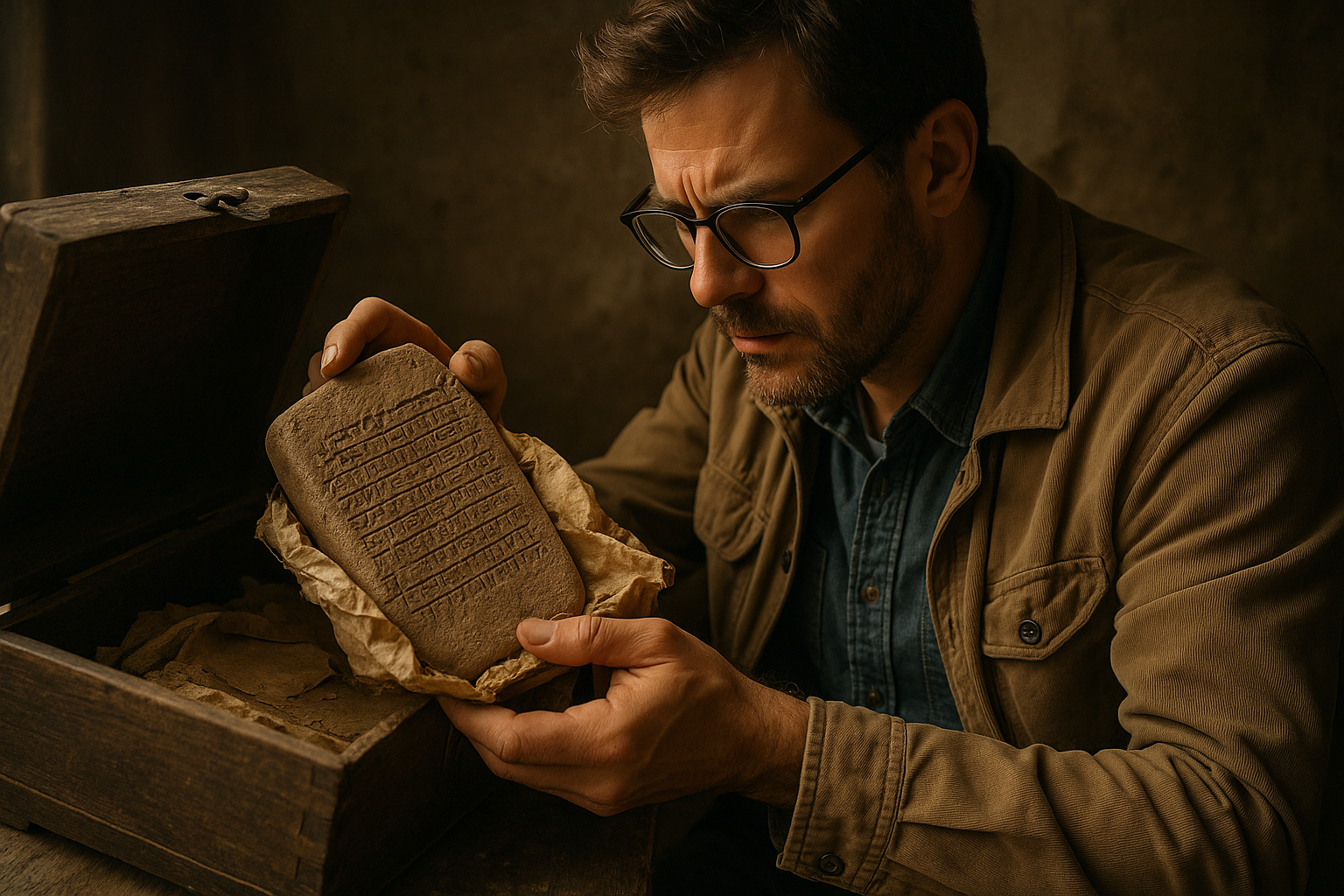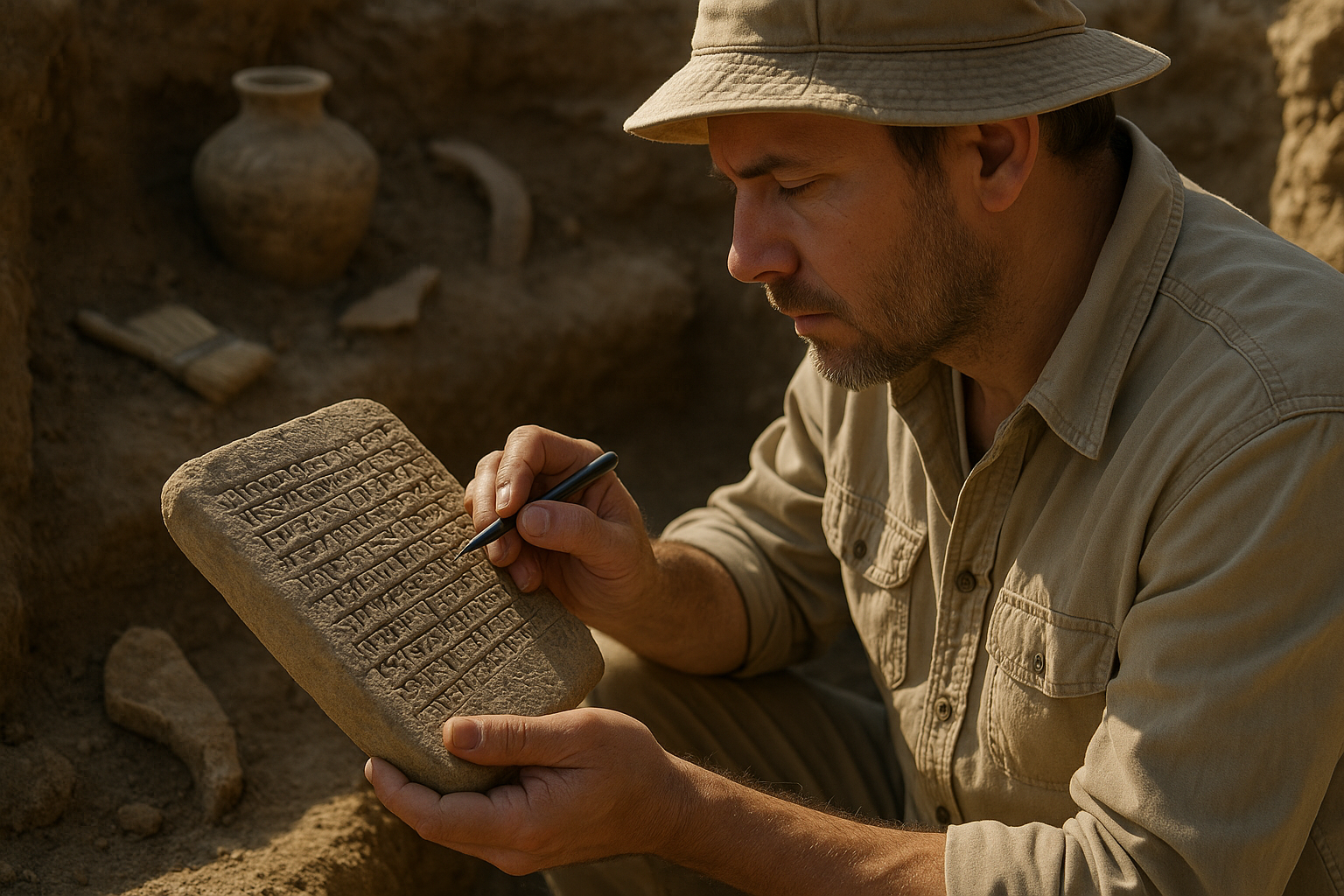Beneath the stones of ancient civilizations lie secrets written in ink, carved in clay, and etched into foundations—messages from the past waiting to be discovered.
Throughout history, builders and architects have embedded hidden inscriptions beneath the foundations of temples, palaces, and monuments. These concealed texts serve as time capsules, offering profound insights into the beliefs, rituals, and daily lives of ancient peoples. Today, archaeologists and researchers employ cutting-edge technology to uncover these buried messages, revealing stories that challenge our understanding of human history.
The practice of hiding inscriptions beneath structures wasn’t merely decorative—it was deeply spiritual, political, and practical. From Mesopotamian foundation deposits to Egyptian cornerstone ceremonies, ancient cultures believed that words inscribed beneath buildings could invoke divine protection, commemorate rulers, or curse potential invaders. These hidden texts transform architectural sites into multilayered narratives waiting to be read.
🏛️ The Ancient Tradition of Foundation Deposits
Foundation deposits represent one of humanity’s oldest documented practices. Mesopotamian kings routinely placed inscribed cylinders, tablets, and figurines beneath the corners of ziggurats and palaces. These objects typically contained cuneiform texts praising the ruler, describing the building’s purpose, and invoking blessings from patron deities.
Archaeologists have discovered thousands of these foundation deposits across ancient Mesopotamia. The inscriptions often follow a standardized formula: identifying the king, listing his titles and accomplishments, describing the construction project, and requesting divine favor. Some deposits included precious materials like lapis lazuli, gold, or silver, emphasizing the structure’s importance.
The Babylonian king Nebuchadnezzar II was particularly prolific in this practice. Excavations at Babylon have uncovered numerous inscribed bricks and cylinders beneath temple foundations, each documenting his extensive building campaigns. These texts provide invaluable chronological data for reconstructing Mesopotamian history.
Egyptian Foundation Rituals and Hidden Texts
Ancient Egyptians developed elaborate foundation ceremonies that incorporated hidden inscriptions. Before constructing temples or royal buildings, priests performed rituals called “stretching the cord,” which involved astronomical alignments and the placement of foundation deposits at strategic points.
These Egyptian deposits typically contained model tools, pottery vessels filled with offerings, and inscribed plaques. The texts recorded the pharaoh’s names, the building’s dedication, and protective spells from the Book of the Dead. Unlike Mesopotamian deposits, Egyptian examples often emphasized cosmic order and the pharaoh’s role in maintaining ma’at—the principle of universal harmony.
Recent excavations at Karnak Temple have revealed foundation deposits containing faience figurines and inscribed tablets that date back over 3,000 years. The hieroglyphic texts describe the temple’s construction as an act of cosmic renewal, linking the physical structure to the mythological creation of the world.
🔍 Modern Technology Reveals Ancient Secrets
Contemporary archaeologists possess tools their predecessors could only dream of. Ground-penetrating radar, electromagnetic surveys, and 3D laser scanning enable researchers to detect hidden chambers and inscriptions without excavation. These non-invasive techniques have revolutionized the field, allowing scholars to “read” beneath foundations before disturbing the soil.
Multispectral imaging has proven particularly valuable for deciphering faded or damaged inscriptions. By capturing images at different wavelengths of light, researchers can reveal text invisible to the naked eye. This technology has recovered countless inscriptions from ancient sites that were previously considered blank or illegible.
Digital reconstruction software allows teams to virtually reassemble fragmented inscriptions found beneath foundations. Computer algorithms can match broken pieces, fill gaps using linguistic patterns, and predict missing portions of text with remarkable accuracy. This computational approach has accelerated the pace of discovery exponentially.
The Role of Artificial Intelligence in Decipherment
Machine learning algorithms now assist in translating ancient scripts found beneath foundations. Neural networks trained on thousands of known inscriptions can identify patterns, suggest translations, and even date texts based on linguistic features. This technology proves especially useful for understudied scripts or damaged inscriptions.
Researchers at major universities have developed AI systems capable of reading Akkadian cuneiform, Egyptian hieroglyphics, and Linear B with increasing accuracy. These tools democratize ancient text studies, making rare inscriptions accessible to scholars worldwide through digital databases and translation interfaces.
📜 What the Hidden Inscriptions Tell Us
The content of foundation inscriptions varies dramatically across cultures and time periods, but common themes emerge. Most texts serve commemorative, protective, or propagandistic functions—sometimes all three simultaneously.
Commemorative inscriptions record the names of rulers, architects, and builders, ensuring their memory would survive even if the structure above collapsed. These texts often include dates using various ancient calendrical systems, providing crucial chronological anchors for historians.
Protective inscriptions invoke deities, recite spells, or include curses against those who might damage the building. Ancient cultures believed that words possessed intrinsic power—writing a protective spell beneath a foundation activated magical defenses that would guard the structure eternally.
Political Messages Carved in Stone
Many foundation inscriptions contain political propaganda designed to legitimize rulers and their building projects. Kings claimed divine sanction for their constructions, associated themselves with legendary predecessors, and portrayed their reigns as eras of unprecedented prosperity.
The Assyrian Empire excelled at using foundation inscriptions for political messaging. Kings like Sennacherib and Ashurbanipal left detailed accounts of military victories, tribute received, and territories conquered beneath palace foundations. These texts weren’t meant for contemporary audiences—they were messages to future generations and the gods themselves.
Some inscriptions contain surprisingly candid historical information. Foundation texts from ancient Persia, for example, provide details about construction techniques, worker organization, and material sources. These practical notes offer insights into ancient engineering and logistics that complement archaeological evidence.
🌍 Geographic Variations in Hidden Inscription Practices
While foundation inscriptions appear across ancient civilizations, regional variations reflect cultural differences. Mesopotamian deposits emphasized royal authority and divine favor. Egyptian examples focused on cosmic order and religious continuity. Greek and Roman practices incorporated different priorities altogether.
Classical Greek builders occasionally placed inscribed curse tablets beneath foundations, particularly in competitive contexts like theaters or athletic facilities. These defixiones sought to handicap rivals or protect the structure from jealous enemies. The inscriptions reveal a worldview where words and writing possessed tangible supernatural power.
Roman foundation rituals, influenced by Etruscan practices, emphasized augury and favorable omens. Inscriptions beneath Roman buildings often recorded the auspices under which construction began, documenting the religious officials present and the signs observed. These texts reflect Roman obsession with divine approval for state undertakings.
Asian Traditions of Concealed Texts
Chinese architectural traditions included placing inscribed tiles or tablets beneath important buildings, particularly imperial structures. These inscriptions often contained Confucian or Daoist texts, names of auspicious dates, and records of master craftsmen involved in construction.
Japanese temple foundations sometimes contain sutra texts or Buddhist prayers written on wooden tablets. These hidden scriptures transformed the entire structure into a sacred object, with the building itself becoming a three-dimensional mandala. Excavations at medieval temple sites have recovered remarkably preserved wooden inscriptions thanks to Japan’s humid climate and careful preservation.
Southeast Asian temple complexes, particularly those influenced by Hindu-Buddhist traditions, incorporated foundation deposits with multilingual inscriptions. Texts in Sanskrit, Pali, and local languages documented royal patronage, religious dedications, and construction dates. These inscriptions provide crucial evidence for understanding cultural exchange and religious syncretism across ancient Asia.
🔬 Preservation Challenges and Conservation Efforts
Hidden inscriptions face unique preservation challenges. Protected from sunlight and weather, they often survive remarkably well—but excavation exposes them to destructive environmental factors. Conservators must stabilize fragile texts immediately upon discovery to prevent irreversible damage.
Clay tablets and cylinders can dry too rapidly when exposed to air after millennia underground, causing them to crack or crumble. Conservation teams now use controlled humidity chambers and specialized consolidants to preserve these artifacts during and after excavation.
Stone inscriptions beneath foundations may suffer from groundwater damage, salt crystallization, or biological growth. Modern conservation techniques include laser cleaning, chemical stabilization, and environmental monitoring to ensure long-term survival of these irreplaceable texts.
Ethical Considerations in Excavation
Uncovering hidden inscriptions raises ethical questions about disturbing ancient sites. Many archaeologists advocate for leaving foundation deposits in situ whenever possible, using non-invasive imaging to study them. This approach respects the original intent of the builders while preserving context for future researchers with improved technologies.
International heritage laws increasingly protect foundation deposits as integral parts of archaeological sites. Removing these objects without proper documentation, analysis, and conservation can result in catastrophic information loss. Professional archaeological standards now require detailed recording before, during, and after excavation of hidden inscriptions.
💡 Case Studies: Remarkable Discoveries
The foundation deposits beneath the Temple of Jupiter Capitolinus in Rome contained inscribed bronze tablets documenting the temple’s multiple reconstructions. These texts helped historians untangle the complex building history of one of Rome’s most important religious sites, revealing previously unknown renovation campaigns and architectural modifications.
Excavations at the ancient city of Mari in Syria uncovered foundation boxes containing cuneiform tablets that dramatically revised understanding of Early Bronze Age Mesopotamia. The inscriptions revealed previously unknown kings, documented international diplomacy, and described religious practices in unprecedented detail.
The discovery of foundation deposits beneath Angkor Wat provided crucial chronological information about Khmer Empire construction techniques. Sanskrit inscriptions identified previously unknown architects and described the temple’s symbolic cosmology. These texts transformed scholarly understanding of Angkorian architecture and religion.
Recent Breakthroughs in Foundation Inscription Research
Ground-penetrating radar surveys at Petra, Jordan, recently detected previously unknown chambers beneath the Treasury building. Initial investigations suggest these spaces contain inscribed stones that may document the monument’s original purpose—potentially resolving longstanding archaeological debates.
Digital analysis of foundation inscriptions from ancient Athens has revealed standardized formulas used across different building projects. This discovery suggests more centralized architectural planning than previously believed, with implications for understanding Athenian political organization and urban development.

🎯 The Future of Foundation Inscription Studies
Emerging technologies promise even more dramatic discoveries. Muon tomography, originally developed for particle physics, can now image underground structures with unprecedented precision. This technique may soon reveal hidden chambers and inscriptions at famous sites without excavation.
Quantum sensors under development could detect minute variations in magnetic fields caused by buried inscribed objects. This technology might locate foundation deposits at sites where traditional methods have failed, opening new frontiers in archaeological investigation.
Crowdsourced translation projects are democratizing access to ancient inscriptions. Digital platforms allow volunteers worldwide to help transcribe, translate, and analyze foundation texts, accelerating research while engaging public interest in ancient civilizations.
Preserving Knowledge for Future Generations
Modern digital archives ensure that knowledge from foundation inscriptions remains accessible indefinitely. High-resolution 3D scans, complete transcriptions, and scholarly analyses are stored in multiple redundant databases, protecting this information against loss or destruction.
International collaborations between museums, universities, and cultural heritage organizations are creating unified databases of foundation inscriptions. These resources enable comparative studies across regions and time periods, revealing patterns invisible when examining individual sites in isolation.
Educational initiatives are bringing foundation inscription research to broader audiences. Virtual reality experiences allow students and interested learners to explore beneath ancient foundations, examining inscriptions in their original contexts and understanding their historical significance firsthand.
The hidden inscriptions beneath ancient foundations represent humanity’s earliest attempts to communicate across time. These buried texts challenge us to reconsider what we think we know about past civilizations, revealing complexities and sophistications that contradict simplistic narratives. As technology advances and new sites are discovered, the secrets beneath ancient foundations continue to reshape our understanding of human history—one hidden message at a time.
Every excavation brings possibilities for groundbreaking discoveries. The next foundation deposit might contain a text that rewrites history, documents a lost language, or reveals previously unknown historical events. This potential keeps archaeologists searching, scholars translating, and conservators preserving these precious voices from the distant past. 🏺
Toni Santos is a temporal researcher and symbolic archaeologist specializing in the study of forgotten burial systems, sacred archival practices, and the visual languages embedded in ancient temporal lore. Through an interdisciplinary and artifact-focused lens, Toni investigates how humanity has encoded knowledge, memory, and mystery into the temporal world — across cultures, rituals, and vanished civilizations. His work is grounded in a fascination with time capsules not only as vessels, but as carriers of hidden meaning. From extinct burial ritual practices to mythical codices and secret temporal seals, Toni uncovers the visual and symbolic tools through which cultures preserved their relationship with the temporal unknown. With a background in design semiotics and temporal artifact history, Toni blends visual analysis with archival research to reveal how time capsules were used to shape identity, transmit memory, and encode sacred knowledge. As the creative mind behind eltonxy, Toni curates illustrated chronologies, speculative temporal studies, and symbolic interpretations that revive the deep cultural ties between artifacts, ritual markings, and forgotten messages. His work is a tribute to: The lost temporal wisdom of Forgotten Time Capsule Burial Rituals The guarded archives of Sacred Codices and Forgotten Temporal Archives The mythopoetic presence of Temporal Symbols and Ritual Markings The layered visual language of Vanished Artifacts and Temporal Messages Whether you're a temporal historian, symbolic researcher, or curious gatherer of forgotten chronological wisdom, Toni invites you to explore the hidden roots of time capsule knowledge — one seal, one glyph, one message at a time.




